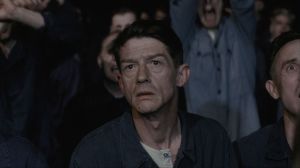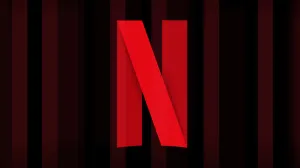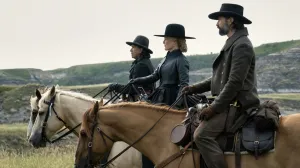At Image Expo Image Comics President and Spawn creator Todd McFarlane sat down to talk with the press about Image Comics, his new series Savior with Clayton Crain, Spawn 250, and the new Spawn series writer Paul Jenkins:
Videos by ComicBook.com
Eric Stephenson today in his Keynote mentioned getting ideas in the shower. Where do you get your ideas?
It’s different being both a writer and an artist. As an artist you need your confined space. As a writer you can do it anywhere. I do a lot of writing on airplanes. I’ll probably write another four or five pages on the way home. I know Robert Kirkman does a lot of writing on airplanes. Hotel Rooms. When we were younger we used to go to after parties, but now I’m an old fuddy-duddy and I go back and do writing now that I’m older and responsible instead of going out and partying [laughs]. Its the only way you can get deadlines done.
The one thing that the new kids coming in need to learn more than anything else is the discipline of the deadline. That 30 days comes 12 times a year and you have to get your work done. I know when I was younger, especially artistically, I would have to train myself and then train everyone around me, meaning your buddies can’t drop in on you and say, ‘Hey, let’s go do something.’ They have to understand as a freelancer, though it seems like you’re not working, you’re building a body of work.
Its interesting, to that point, that people who don’t keep deadlines are not slower, they don’t write slower and they don’t draw slower. We all draw at about the same rate. The difference between the guys who turn out work and the guys who don’t is the guy who does turn out work is sitting at a table for fifteen hours a day and gets more work done than the guys who takes three days off and then draws for a couple of hours.
So with Spawn you have Paul Jenkins coming on after issue 250. What made you want to work with him?
For some of you young kids [laughs], Paul actually did a book for me years ago called Spawn: The Undead. Back then I brought on a handful of different guys to do a variety of different books. Out of all the guys I worked with he was the guy that took the task of doing something new to heart. The thing that’s most frustrating to me about working with new writers on Spawn in the last 20 years is that they don’t break out of the parameters I set down. I keep saying to them that those are just guidelines. Take them and go beyond, you know? They all talk a mean fight and say ‘yeah yeah yeah I’ve got some cool stuff I want to do,’ but then I keep getting regurgitated stuff, that though its more sophisticated, its still the same ol’ rules.
I liked it when guys like Alan Moore came over who were ignorant of American comics so they didn’t know that they were going outside the boundaries, they were just writing cool stuff. I thought that naivety, at times, alowed them to add more to the mythos of the characters. We as American creators have a bad habit, for example with Stan Lee, of following in their footsteps. For example with the character, The Lizard, and for 30 years he was the same character. He would get mad as the professor and turn into The Lizard and talk with his lisp, ‘I’ll get you Ssssspiderman if itssssss the lassssst thing I do.’ It was the same writing from Stan to Roy Thomas, to Len Wein, to Bill Mantlo, and they were just paying homage on up. I always thought it was cool when guys like the Brits came in and, not having read the Stan Lee stuff, just did a cool Lizard story. That’s why the Lizard was so different in my Spider-Man story. In mine the Lizard didn’t speak one word. I’m not saying it was better or worse, I’m just saying that I didn’t want to do that same Stan Lee story.
This is all a long-winded story of saying that Paul Jenkins took Spawn and gave me stories that I didn’t feel like I had written. I’m beating him up again saying that there is only one thing I’m going to corner you in on, which is when I feel you’re being repetitive. I want to be surprised as much as the readers do. This is a new chapter for this character, and if it feels like we’re just going backwards and re-doing it then what’s the point?
You mentioned that your wife said ‘Go work on the Spawn film script. Why is now the right time?
Because she spent money on this room that has no Internet. She knows that I’m a cheap guy and that since she spent the money, I better go into it and do the work [laughs]. I’ve got a case of ADD too, and the last time I tried to write the film script I was in a room for three days and then I started thinking, ‘wouldn’t it be cool if I made toy building blocks that looked realistic like The Walking Dead stuff that just came out,’ so within three days I was already trying to create something else. She’s just trying to lock me in a bubble saying ‘Stop thinking about anything else and get the script done.’
And the stupid piece of all of this is that the entire movie is already put out on index cards. The scenes are all in order, short of some dialogue that needs to get in, more than a quarter of it is done. My guess is if I go in that room and shut the world out I can get it done in seven to ten days. This how stupid it is [laughs]. I’ve been putting these seven to ten days off for years now because I’ve been doing other things. My wife is way more pragmatic than I am. She says, ‘you know, they’re still phoning for it. They’re still asking for it but if you keep doing this bulls**t someday they’re just going to stop asking.’ People are going to superhero movies, and Hollywood wants it and the opportunity is still there, but I just have to get it done.
Every twenty pages I write of a comic book could have been twenty pages of the film script. Every five issues I write could have been a film script. That’s what I’m hoping for in working with Paul Jenkins on Spawn is that I can just let him take it and go off in my corner for the next couple of months.
What happened with Grant Morrison and Brian Wood writing the Spawn series?
I talked to Grant. Somebody wrote that he’d be writing, but I was just talking with him. He was trying to see if he could make it work in his schedule but something came up in Hollywood that filled his gap. He actually had some pretty specific ideas about what he wanted to do on Spawn that I thought was really cool, but he was just busy with other stuff.
Brian came along and it was just a little bit of oil and vinegar. I’m old enough now, arguably wise enough now, to know the inevitable so I knew it wasn’t going to be long-term. At that point it actually all worked out because all of a sudden Paul Jenkins had finished some of his commitments and was open. And it turned out Paul knew [incoming series artist] Jonboy Meyers.
How much involvement do you have in Saviour?
The entire concept is mine. I’ll be co-writing it with Brian Holguin. I sat down with Clayton Crain as well and told him how much latitude he could have with the plot too. I have eight full issues done already. That’s almost 200 pages of story.
Clayton is doing the painting on it. It’s a bit more of a modern, and a little more sassy take on the typical superhero story.
Does it strictly deal with Christianity?
No no no, I’m not dealing with Christianity or religion as a whole. I’m just saying that if a guy came and walked on water and parted the seas, but didn’t fall in line with all the other things, some of those religions would say ‘Hold on, this guy is stealing part of our gig.’ I think we live, sadly, in such a cynical world that people probably wouldn’t embrace it. This guy isn’t just going to get a hall pass for being what he is. CNN would be on him tomorrow and people would say ‘those aren’t heavenly powers, those are from the devil.’ People would try to poo-poo it instead of embracing what might actually be true.
He has no memory of who he is or how he got these powers, so he’s trying to define himself at the same time everyone else is trying to define him. It goes back to that song, ‘What if God was one of us? Just a slob like one of us.’ No superheroes, no supervillains, no spandex. It’s more in line with what Image is known for right now. Marvel and DC cover the superhero genre, they’ve got that blanketed pretty well. We’re just creating the other possibilities.
Is it going to be an ongoing series?
The first story-arc is eight issues. Probably be issue four I’ll be able to see if there is an appetite for more. The concept can go for a long time.
How involved in the day-to-day at Image are you? What role do you play, now?
Well, my technical title is President. The day-to-day business operations are all masterminded by Eric Stephenson. He’s the one in the trenches doing it. It’s still the five of us, four of the original guys and then Robert Kirkman. When it comes to big decision making, then its us, because at the end of the day we are the ones who created the “I”.
We give Eric a lot of latitude. At first we had it so he had to clear the books through us, but then we came to the conclusion that maybe since we all grew up in the superhero genre that we ourselves may be in our own little bubbles. There are these little pockets of people who are looking for these different kinds of books, so even though we might not necessarily understand a book and its quirkiness, there is still an audience out there for it. It probably started when Jim Valentino was in charge of the day-to-day operations and then Eric has just blown it up. It’s a little bit of ‘if it ain’t broke, don’t fix it.’ It’s growing. We’re at twelve percent of market share and Marvel and DC will be at around twenty four percent. I see that and I can’t believe that they’re only twice as big as we are, even with that giant infrastructure behind them for decades and the characters they have. Only twice as big as us.
Who knows, maybe we’ll all put out our mini series and annuals on one day and maybe see if we can take them down for one month.
The thing that impresses me about the audience that buys Image, is that they’re looking for diversity. They’re not looking for the same thing. Remember, we were founded on basically standard American superhero comic books and now we’re so far away from that. I think the expectation of our fanbase is that now these people are willing to check out something from us that they wouldn’t normally pick up and give it three issues to hook them before they’re out. Then it’s really on the creative teams to hook the audience. I get a sense there’s a bigger audience out there willing to at least try new things and I think that’s the reason why we’re growing. And also you get the standard superhero guys over at Marvel and DC who have that one non-superhero story they want to do and they come over to Image to do it. We’ve got this cool hodge-podge of a Molotov cocktail we’re building called Image.
—
Are you excited for the new direction of Spawn? Looking forward to seeing what the movie ends up looking like Let us know over in The Spoiler Room or comment below!










